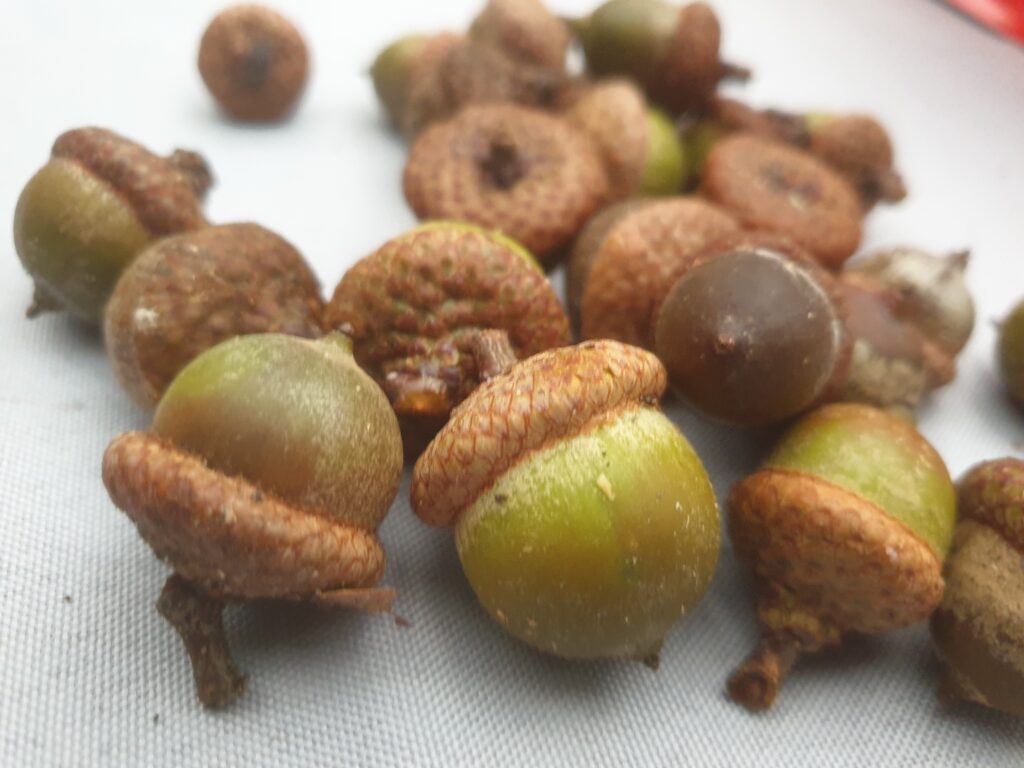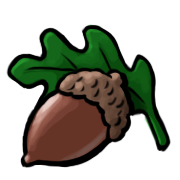Red oak (Quercus rubra)
The red oak (Quercus rubra) is native to the USA, where it is the state tree of the state of New Jersey.
The red oak can grow up to 35 meters.
Untypically for oaks, the bark is initially smooth when the tree is young and only becomes rough and “barky” with age.
The leaves turn to a rich red (reddish brown) in the fall. For the latter reason, the red oak is also often found in parks.
It begins to fructify (form acorns) at about age 25.
The acorns have a two-year development period. This feature is beneficial against pest infestation, as pests are not adapted to the two-year development period of acorns.
The fruits remain very small in the first year and ripen only in the second year. An acorn is about 2×2 centimeters, egg-shaped and only partially surrounded by a fruit cup.
Originally it comes from the eastern part of the USA, but has been used in Europe since the 17th century.
It is considered to be assertive and relatively climate robust. It is considered relatively drought tolerant and storm resistant due to its taproot system.
Their alien origin is neglected in trade-offs against the benefits of increased timber harvest.
“Other than general conservation discomfort with guest tree species, red oak is seen as unproblematic in most cases. Undesirable spread in mature coppice and border sites, especially in rocky areas where native rocky flora may be displaced. Because it is less accepted than native oaks by specialized and phytophagous insects, it establishes species-poor biocenoses (Source:
https://www.lw-heute.de/je-waermer-desto-regen-braucht-roteiche).
In Germany, a study exists comparing species diversity on red oak (Quercus Rubra) and English oak (Gossner 2004):
* Compared to the English oak, the red oak crown monocultures are poor in individuals and species.
* The differences are more pronounced in the pure stock.
* Red oak has significantly lower numbers of individuals and species of endangered insect species. Nevertheless, the red oak is not an “ecological desert”.
(cf. also https://www.lwf.bayern.de/biodiversitaet/biologische-vielfalt/230750/index.php).
You can buy acorns of red oak in our store.

